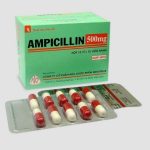
The name benzylpenicillin is commonly used to describe either benzylpenicillin potassium or benzylpenicillin sodium as these are the forms in which benzylpenicillin is used. Benzylpenicillin means either the potassium or sodium salt. The potassium salt of a substance produced by growing certain strains of Penicillium notatum or related organisms or obtained by any other means. A white or almost white crystalline powder.

